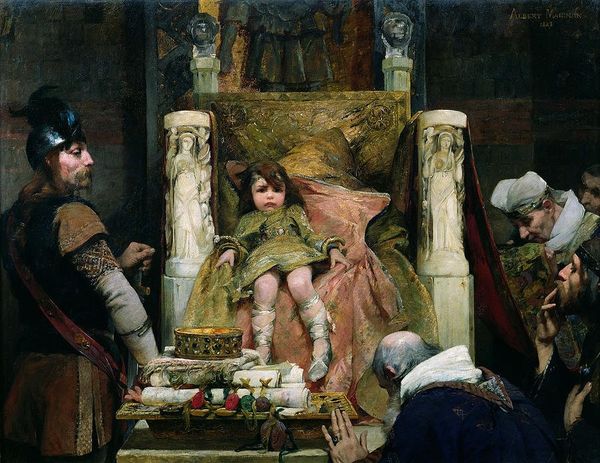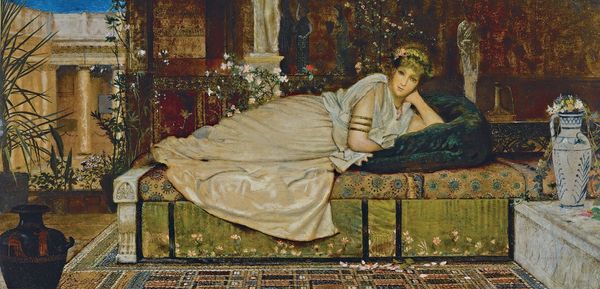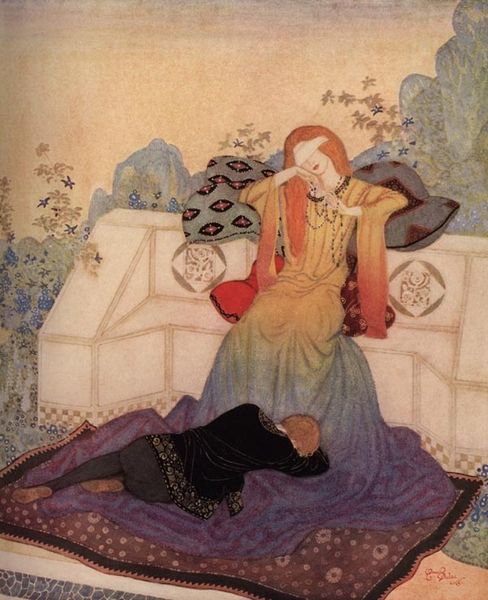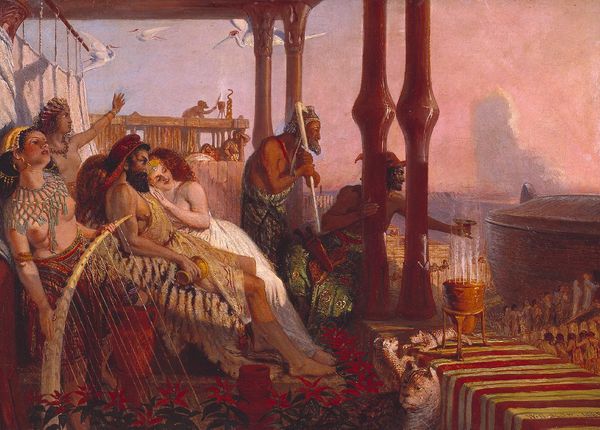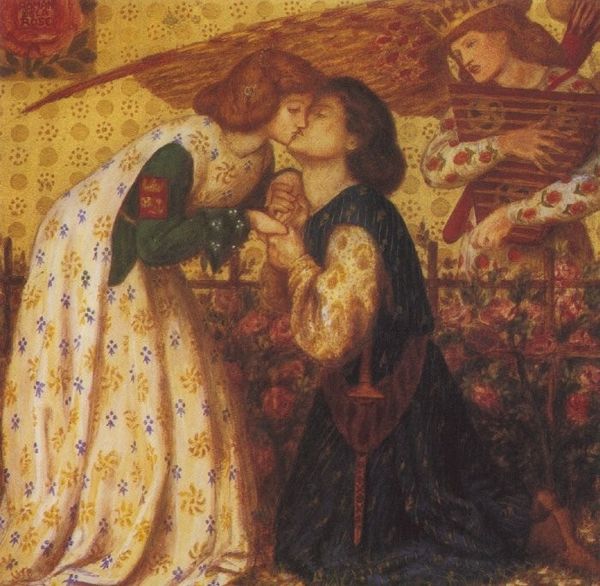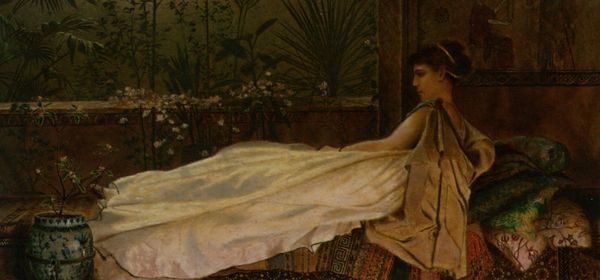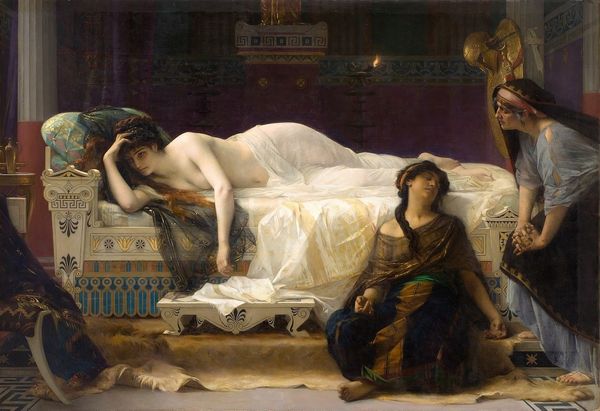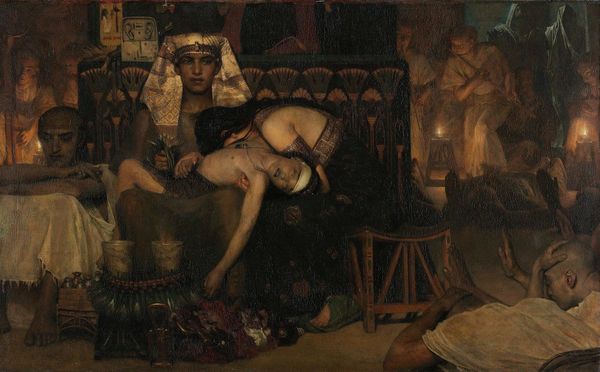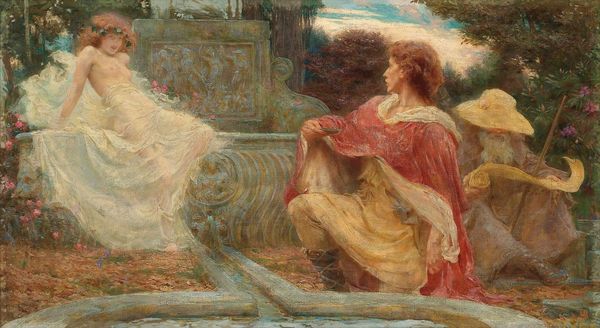
painting, gouache
#
portrait
#
gouache
#
narrative-art
#
painting
#
gouache
#
fantasy-art
#
oil painting
#
symbolism
#
pre-raphaelites
Copyright: Public domain
Editor: Here we have "The Sleeping Princess" by John Duncan, done in gouache. There's a dreamlike stillness to it, with all the flat planes of color. What do you see in this piece? Curator: Immediately, the tapestry in the background arrests my attention. Notice how the flat patterning pushes forward, vying for prominence with the figures. Duncan orchestrates a visual tension here, collapsing depth in a way that is profoundly modern, despite its Pre-Raphaelite sensibilities. It begs the question: What does the flattening signify? Editor: Are you saying the flatness makes the scene feel symbolic rather than real? Curator: Precisely. Consider how the limited color palette, dominated by muted golds, blues, and reds, contributes to the ethereal quality. Observe also the rigid geometry in the decorative motifs against the organic fluidity of the figures’ drapery and hair. What does that contrast suggest? Editor: It seems to put the figures outside of any natural order. Maybe the contrast helps communicate a fairy tale quality. I was thinking, the prince almost looks trapped, like another object within the overall pattern. Curator: Indeed. He is integrated into the overall composition in a rather unexpected manner, isn't he? This deliberate structural arrangement prioritizes design and the overall impact above narrative clarity, challenging traditional storytelling. Editor: So, we shouldn't be focusing on who or what is going on, but how all the elements come together to make one complete experience. Curator: Precisely. A valuable observation on Duncan's orchestration of form, color and texture. The essence lies in the formal relations and how the painting affects one’s sensibilities, which is much more involved that storytelling. Editor: That gives me a lot to consider when looking at other narrative paintings! Thanks.
Comments
No comments
Be the first to comment and join the conversation on the ultimate creative platform.
